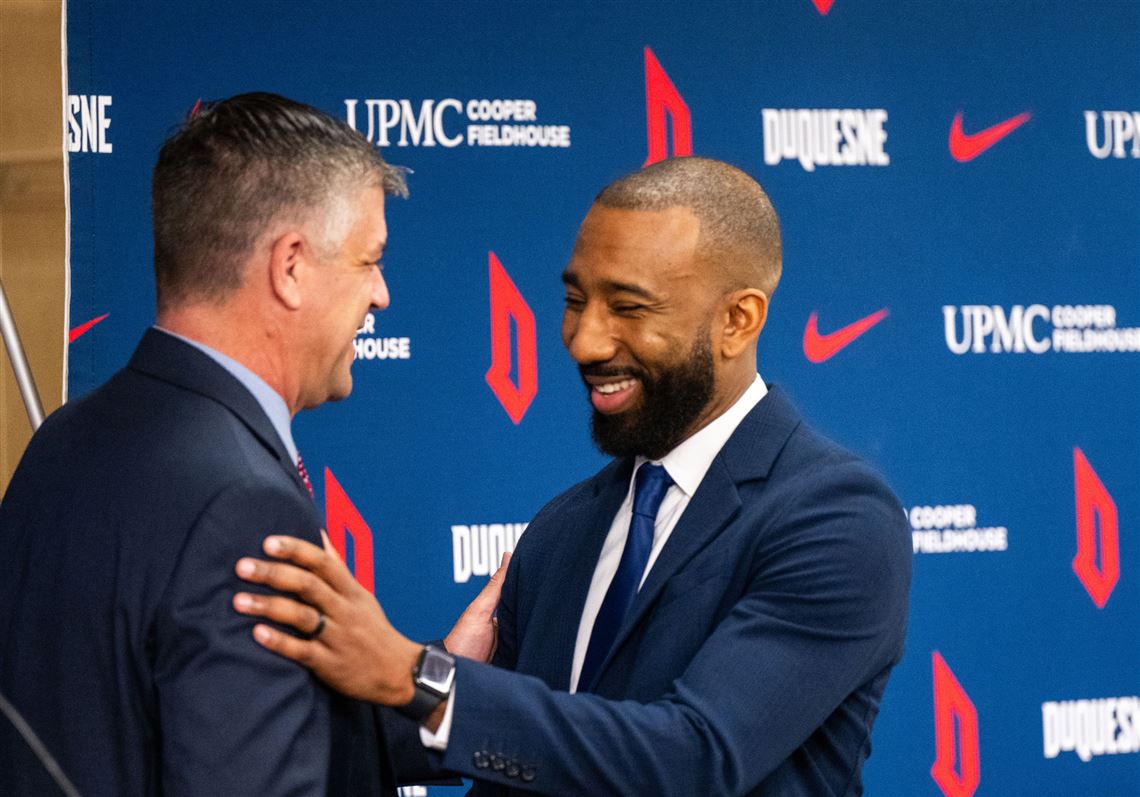Sports
Manny Pacquiao Net Worth & Career Highlights 2025

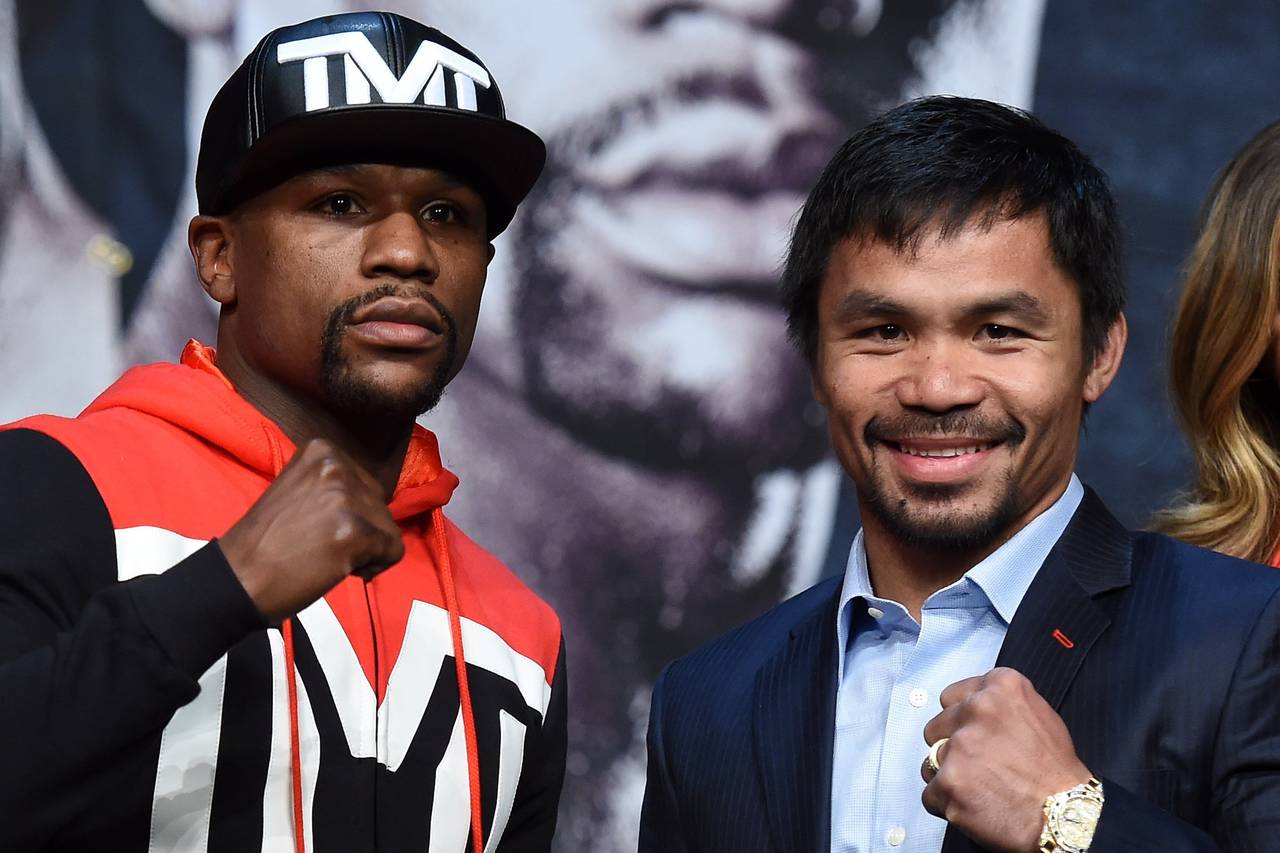

 Introduction: The Rise of a Champion
Introduction: The Rise of a Champion
Manny Pacquiao is not just a name in boxing—he’s a global icon. Born into poverty in the Philippines, he became one of the world’s richest athletes. Today, Manny Pacquiao’s net worth is a topic that interests millions of fans and investors alike.
In this article, we will explore his net worth, his legendary boxing career, his political journey, and his business ventures. Along the way, we’ll touch on the lessons you can learn from his success.
 Manny Pacquiao Net Worth in 2025
Manny Pacquiao Net Worth in 2025
As of 2025, Manny Pacquiao’s net worth is estimated to be $220 million). He earned most of his fortune through professional boxing. However, he also made millions from endorsements, acting roles, business deals, and political activities in the Philippines.
Quick Fact: Pacquiao was once the second highest-paid athlete in the world, behind only Floyd Mayweather Jr.
Breakdown of Manny Pacquiao’s Income:
- Boxing career earnings: Over $500 million gross
- Endorsements: Nike, Nestlé, Gatorade, and more
- Political career: Modest government salary
- Business ventures: Gas stations, real estate, and a basketball league
 Career Highlights: The Boxing Years
Career Highlights: The Boxing Years
Manny Pacquiao turned professional at just 16 years old. He won his first world title at 19. He is the only boxer in history to win world titles in eight weight divisions.
Key Career Stats:
- Record: 62 wins, 8 losses, 2 draws
- Knockouts: 39
- Major titles won: 12
- Years active: 1995 – 2021
 Notable Fights:
Notable Fights:
- vs. Oscar De La Hoya (2008): A career-defining win
- vs. Ricky Hatton (2009): A second-round knockout
- vs. Floyd Mayweather Jr. (2015): The most lucrative fight in history
- vs. Keith Thurman (2019): Pacquiao won at age 40
Read more on Pacquiao’s full boxing record on BoxRec
 Political Journey: Senator Manny Pacquiao
Political Journey: Senator Manny Pacquiao
After his boxing career slowed down, Pacquiao turned to politics. He served as a Senator of the Philippines from 2016 to 2022 and even ran for President in 2022.
Although he did not win the presidency, his campaign boosted his visibility and influence. His political career shows his dedication to public service, especially in fighting poverty.
Fun Fact: Pacquiao has built hundreds of homes for the poor in the Philippines.
 Manny Pacquiao’s Business Ventures
Manny Pacquiao’s Business Ventures
Outside the ring, Manny is a savvy businessman. His investments are spread across different sectors.
Top Business Interests:
- Real estate: He owns luxury properties in the Philippines and abroad
- Restaurants: ‘Pacman Hapag Kubo’ in Manila
- MPBL (Maharlika Pilipinas Basketball League): A basketball league he founded
- Entertainment: Guest appearances in films and TV shows
These ventures continue to boost Manny Pacquiao’s net worth year after year.
 Endorsements and Media Deals
Endorsements and Media Deals
At the peak of his fame, Pacquiao was a marketing goldmine. He signed deals with brands like:
- Nike (before parting ways in 2016)
- Gatorade
- Hennessy
- Monster Energy
His humble background and strong work ethic made him relatable, and brands loved him for it.
 Life Beyond Boxing: Family and Faith
Life Beyond Boxing: Family and Faith
Manny Pacquiao is a devoted Christian, husband, and father. He often shares Bible verses and inspirational messages with his fans.
He is married to Jinkee Pacquiao, and they have five children. His son, Jimuel, is now trying to follow in his footsteps as a boxer.
Pacquiao’s lifestyle is more humble than most millionaires. He is known for giving away millions to charity and fans.
 Conclusion: A Legacy Beyond Wealth
Conclusion: A Legacy Beyond Wealth
Manny Pacquiao’s story is more than just about money. It is about perseverance, discipline, and humility. His journey is inspirational, from sleeping on the streets to becoming a world champion and a millionaire.
As of 2025, Manny Pacquiao’s net worth continues to grow. But more importantly, his influence and legacy remain strong. Whether in the ring or public service, he proves that anything is possible with hard work.
Don’t Miss: Is Floyd Mayweather Jr. The Greatest?
Sports
USC Paralympian Ezra Frech is a pioneer under pressure
EZRA FRECH PLACES two black boxes in his backpack and jumps on his electric scooter to ride a few blocks to the University of Southern California, where he is about to give his professors a very good reason for having missed the first three weeks of the semester. The boxes contain the two gold medals […]
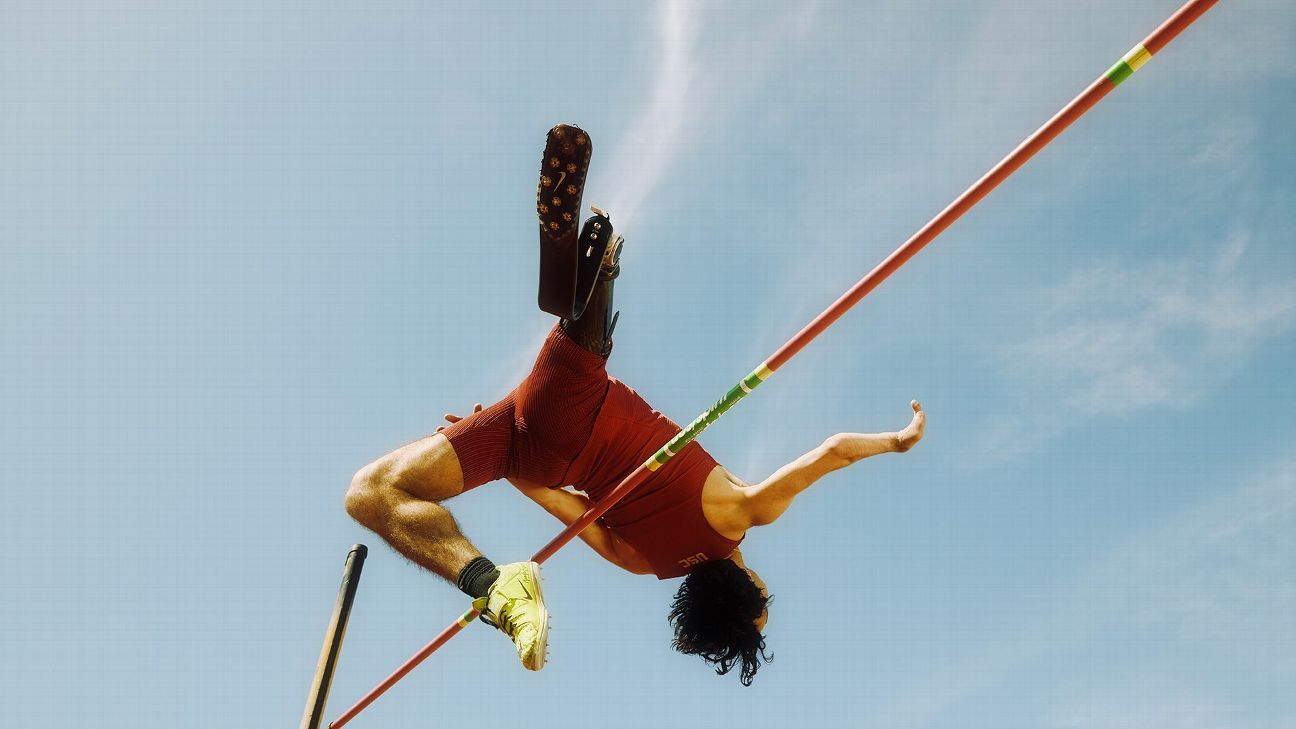
EZRA FRECH PLACES two black boxes in his backpack and jumps on his electric scooter to ride a few blocks to the University of Southern California, where he is about to give his professors a very good reason for having missed the first three weeks of the semester.
The boxes contain the two gold medals the 19-year-old just won at the 2024 Paralympics in Paris, in the 100-meter and the high jump for the T63 classification (athletes with a single-leg amputation above the knee).
“It’s USC; they are known for their Olympians,” says Frech, who was born with congenital limb differences. “I know the professors can understand the Olympics, but I wasn’t sure if they even realized the Paralympics were going on.”
As Frech, wearing shorts and a T-shirt, waits at a stoplight on Jefferson Boulevard near downtown Los Angeles, two USC students not-so-subtly whisper, “Is that that Paralympian?” One student takes out her phone and snaps a picture of him crossing the street. By the time Frech arrives at the Cinematic Arts building, multiple people have stopped him to ask for photos.
“I had been recognized before Paris, a little bit, because of the Tokyo Paralympics and my social media where I posted everything from my disability to training to modeling for fashion brands, but never to this extent,” Frech says. “I couldn’t believe it, honestly. It just made me feel like, ‘Wow, this is happening. I’m here for a purpose and reason.'” Frech keeps his gold medals in his backpack for his first few weeks of school, handing them to anyone who wants to put them around their necks.
Frech has been in the national spotlight since the 2020 Tokyo Games, where he was featured in the ads from Team USA and NBC. He’s also one of the faces of the 2028 Olympic and Paralympic Games in Los Angeles, where his Angel City Sports foundation provides sports clinics and competition opportunities to people with disabilities. With a social media following of more than 250,000, and celebrities such as Selena Gomez reposting his achievements, Frech gained the attention of the fashion world, where he has modeled for designers such as Hugo Boss.
But Paris brought new levels of fame to Frech, who, on his way to class on this clear September day, knows he’s making history just by being on USC’s campus. As the first above-the-knee amputee to be recruited to an NCAA Division I track and field program — let alone the winningest program in the country — Frech’s goal is to show the world that an athlete with a disability can compete against the best college athletes without disabilities.
He embraces the pressure of that goal with USC’s outdoor track and field season just months away. It will be a season in which he’ll struggle to medal as he confronts the challenges of such competition, and where he’ll hear from coaches, teammates and those he has inspired that his effort and determination are what matter the most. He’ll hear those messages, but he’ll also resolve to make the marks.
“For me, this is life or death,” Frech says. “I believe what I do out on the track, my marks, my medals, all impact how the world views disabilities. I genuinely believe my purpose on this Earth is to normalize disability, be an example of what’s possible as an amputee.”
HIGH JUMPER SAM Grewe, now Ezra’s mentor and Team USA teammate, became the first amputee to compete in NCAA Division I track and field when he walked onto Notre Dame’s track and field program in 2019. When Frech was in high school, he realized there weren’t any adaptive programs at the colleges he wanted to attend. So he made it his goal to become the first above-the-knee athlete to be recruited to a Division I program.
“I wanted to do something no one’s ever done before,” Frech says. “Trailblazing is in my DNA. I love pursuing things that seem impossible.”
Frech, who won gold in the high jump at the World Para Athletics Junior Championships at 15 and placed fifth in the high jump at the Tokyo Paralympic Games at 16, reached out to hundreds of NCAA coaches during his junior and senior years at Brentwood School in Los Angeles. “Our current marks to make the squad are seven meters in the long jump and 1.96 meters in the high jump,” one coach wrote to Frech. “We have some guys on the squad who are not quite at those marks yet, but they’re primarily decathletes or have other events.”
Those marks became a recurring theme in the coaches’ responses. “I realized that a lot of it had to do with the numbers alone,” he says. “And although I was trying to do everything to get there, I think it was also a little bit that some coaches weren’t willing to take a risk on a kid who was an amputee. There’s a lot of variables and unknowns with that. And maybe they just didn’t know if I was going to hit them in the time period, or ever.”
At the 2020 Tokyo Paralympics, 16-year-old Frech placed fifth in the high jump with a personal best 1.80 meters and eighth in the long jump with 5.85 meters. Shortly after, he was jumping 6.20 meters in the long jump and 1.83 meters in the high jump. Between his junior and senior years in high school, Frech raised his marks to 6.86 meters in the long jump and 1.95 meters in the high jump. In 2023, Frech set a world record and earned the gold medal in the men’s high jump T63 category with 1.95 meters at the world championship. Before his Paralympics and worlds experiences, Frech held the title for high jump at the World Para Athletics Junior Championships.
“I needed someone to believe in the vision,” Frech said. “Because this is the coach that I was going to be spending the most important four years of my career with. And if this coach isn’t going to believe in me when I’m on the cusp of accomplishing a specific mark, then how am I going to sit here with this coach and say, ‘I want to win three gold medals in L.A. in 2028 at the Paralympics’?”
The inquiries and rejections went on for nearly six months. Then, in summer of 2023, he heard from USC’s newly hired jumping coach, Jeff Petersmeyer.
“The first time I saw him jump, he just kept making bars,” Petersmeyer said. “He just kept making bars, and I was really impressed. And I was like, ‘Man, this guy’s got some potential.’ You could be the highest high jumper, the further long jumper, but if it’s not a good match, then you’re probably not the right person for us here at USC.
“But for Ezra, it’s not all about how high he jumps and how far he jumps, it’s about the person and what he brings to us and what we can bring for him and his development.”
By December, USC had offered Frech admission to the university with “the understanding that you will compete as a member of USC’s Men’s Track and Field team during at least your first year of enrollment at the university.” Ezra also received the inaugural Swim With Mike Foundation’s Amir Ekbatani Paralympic Scholarship, awarded to a Paralympian attending USC or UCLA.
“Ezra brings so much to the table with the team,” Petersmeyer said. “His energy, his drive, his resolve, his determination, his charisma. Everything is so important and salient to what we’re trying to do as a team. Having Ezra train with the upperclassmen who have titles and records already is so important to not only his success but the success of them too. He’s a valuable member of this team.”
ON MAY 11, 2005, Bahar Soomekh lay in the hospital bed at Cedars-Sinai in Los Angeles, her newborn son wrapped in a blanket in her arms. She wasn’t aware of the pandemonium happening around her in the delivery room.
Soomekh heard her husband, Clayton, asking everyone to leave the room. “What’s going on?” Soomekh remembers asking. She saw her doctor pacing back and forth. “What’s happening?” Soomekh yelled.
More doctors piled into the delivery room and took the newborn out of his mother’s arms. Bahar and Clayton were told their son was born with congenital limb differences — a condition where the limbs do not fully develop or form while the baby is in the womb. Physically, the newborn didn’t have a left knee, left fibula or four fingers on his left hand. His left leg was curved up toward his waist, and his left arm and hand were curled toward his chest. Despite numerous tests and 3D ultrasounds during the pregnancy, doctors missed the signs of a congenital condition.
Less than 24 hours later, doctors told the new parents that their son’s leg would have to be amputated and discussed options for surgeries that would provide mobility on his left hand. Soomekh’s mind raced. How is he going to be at school? Is he going to have problems? Are kids going to make fun of him? Bully him? What is his life going to be like?
The new parents decided on a name for their newborn: Ezra. The biblical name meaning “help” or “helper” in Hebrew spoke to the parents.
At 2 years old, Frech underwent groundbreaking surgery to amputate his left leg and transplant his left big toe to his left hand. Frech’s surgeons, at Boston Children’s Hospital pioneered the procedure with the goal of improving hand function and allowing engagement in physical activities. While his parents made a point of never hiding his disabilities, as he grew older, Frech began to realize how his body was different from those of other people he saw.
When he was 4, the year he got his first prosthetic leg, Frech was staring at himself in the bathroom mirror at his home in Brentwood, tears streaming down his face. He called to his mother. “Who looks like this, Mom? Who? No one is like me,” Frech sobbed. “Why did God pick me to not have the leg? Why did God pick me not to have the fingers?”
This was the first time Soomekh had seen her son break down over his disabilities. “Look at me,” she told him. “Remember your name. Ezra, which means to help, which means to teach. Your purpose is to help and teach the world about the beauty of disability. God picked you because you’re going to change the world.”
“Everything we did for Ezra was to build him up,” Soomekh says. “I would tell him, ‘Ez, put your head up. Walk with your chest out. I want you to walk into every room, every park and look and stare down everybody in that room. You let them know you arrived.'”
A few years later, on the grassy field at Brentwood School, 6-year-old Frech cradled a football in his left arm and looked around to see who was open. He was playing flag football with his classmates, and he was the quarterback. With only a few yards between him and the end zone, Frech took off running.
As he picked up speed, he realized his prosthetic leg was starting to detach. Within a matter of seconds, Frech’s running blade flew off his body and landed in front of four kids from the opposing team. Everyone froze. Still clutching the football, he hopped into the end zone for a touchdown.
“Everywhere I went in public, people were staring and pointing fingers and whispering. I felt like a zoo animal,” Frech says. “I was battling my own insecurities, battling my own perception of myself. The way I got through that was genuinely realizing that there was nothing I could do. I might as well make the most out of my life.”
By his 10th birthday, sports had become a huge part of that life. “When I was playing a sport, I wasn’t thinking about the fact that I was the only person at my school with a disability,” he says. “I was just one of the athletes.”
Playing on a club basketball team, Frech practiced a few times a week with his teammates and coaches. But he would dedicate time in his backyard, before and after school, to honing his skills, dribbling the basketball between his right leg and left prosthetic, navigating his own mobility on the court.
At practice and on game days, Frech displayed unwavering confidence. But as his skills developed, so did the disparaging comments. One day during basketball practice, Frech heard his coach yelling, “Are you guys kidding me? You’re letting the kid with one leg score on you right now?”
“Underestimating me probably pisses me off the most,” Frech says. “I always had to go the extra length to prove my worth, because it was so unlikely that the kid with the disability was going to be a starter on the team.”
“I’M READY TO go,” Frech says, as he walks onto the field at Allyson Felix Stadium on USC’s campus.
It’s February, less than one month away from his collegiate debut, and Frech has arrived at the track almost an hour before his teammates. He starts his warmup routine. After a few minutes, he removes his walking prosthetic and wipes down the upper part of his left thigh. Sliding on a rubber covering, he pushes his running blade onto his left thigh. Frech jogs up and down the turf field.
He removes his running blade and replaces it with his jumping prosthetic. “I’m ready to go,” he says again.
With teammates Elias Gerald and Brady Palen and Coach Petersmeyer standing adjacent to the high jump, Frech walks to his starting mark. In his first attempt, he clears the bar at 1.90 meters. Bouncing off the bright red mat, Frech races back to the starting mark. “Let’s go again,” he says. Catapulting off his right leg, he rotates his body to face his chest toward the sky and positions his left prosthetic to swing over the bar. Creating a gap between his body and the bar, Frech clears it with room to raise the bar even more.
Running into a curve with his prosthetic, Frech has little room for error in the high jump. Without a foot or ankle on his left leg, he can’t strike the ground in an angled position. Instead, he must run on the outside of the prosthetic, which increases his chances of slipping or falling. While propelling himself over the bar, Frech doesn’t have any control over the lower part of his prosthetic leg.
“If I place the blade literally centimeters to the left, right front or back off in any direction, it will throw off the entire run and everything will be messed up,” Frech says. “I’ve gotten really good at learning how to place it over the last 19 years so I know how to put it in the right position. Once I’m in the air, the prosthetic leg doesn’t provide me with a ton of momentum the same way swinging an able-bodied leg would. The reason I miss bars is because the blade takes it off.”
Springing off the mat, Frech moves to the side to watch a replay video from his coach’s phone. Catching his breath, Frech watches closely as his teammates prepare for their jumps.
Having recently returned from winning the NCAA Division I men’s indoor national championship — the 32nd national championship for the Trojans men — Gerald and Palen are two of the best jumpers in the nation. Clearing above 2.0 meters on a regular basis, the two upperclassmen set the standard for USC’s team. As the two took turns clearing above 2 meters, Frech focused on their form and energy.
“Having these three guys train together is so important to success, and Ezra’s development is going to be enhanced by having Brady and Elias,” Petersmeyer says. “Realistically, this season, we want him to earn a spot on the Big Ten roster. I know that’s something he’s trying to attain. He needs to get faster and stronger, and that’ll happen.”
Retreating back to the men’s locker room, Frech grabs at his phone and starts scrolling on social media. He shakes his head in disbelief. “Can you believe this?” Frech says to Gerald and Palen, showing them his phone. After posting videos on social media of him clearing bars at practice from the past few weeks, in anticipation of his season opener, Frech received a flood of comments and messages: “Isn’t this cheating?” “How is this not an advantage?” “Bro has a built in spring!” “You’re cheating.”
“People don’t understand how a prosthetic works,” Frech says. “They don’t understand the disabled community. And they just say ignorant stuff that makes absolutely zero sense. But usually the good comments outweigh the bad.
“But ever since posting about USC, it’s definitely increased.”
A few hours later, Frech sits in his car and hits record on his phone. The next day, he uploads a reel on Instagram: “People say I have an advantage. Let’s talk about it.
“If having a prosthetic leg was cheating, then why is my world record in the long jump, 100-meter and high jump way less than an able-bodied athlete?”
In the weeks following, Frech competed for USC at four invitationals where he battled to find a place on the leaderboard. After claiming second in the high jump and seventh in the long jump at the first outdoor meet of the year, the Trojan Invitational, Frech traveled with the team to the LSU Battle of the Bayou, where he failed to clear a valid height and didn’t place on the leaderboard. Finishing 27th in the long jump at the 65th annual Mt. SAC Relays in April, Frech knew his first season was coming to a close. In his last meet with the team, at the USC vs. UCLA Invitational, Frech finished fifth in the high jump and seventh in the long jump.
“It’s disappointing to not perform my best,” Frech says. “I know what I’m capable of, and I know I have what it takes to get there. We knew that there was going to be a learning curve and that it would take some time.”
USC went on to win its 33rd men’s national championship in June.
“Ezra wasn’t one of the jumpers for us at the national championships, but he showed up and gave it his all,” Petersmeyer says. “He helped us win these titles. He’s a valuable member of the team.”
This summer, as Frech prepares for the 2025 World Para Athletics Championships in October, he’s not shy about his goals for his next season with the Trojans.
“I will make the Big 12 team. I will travel to more away meets. And I will continue to improve my skills and develop.
“It wasn’t expected that I would come out and win everything in college. This is new territory. But I’m here,” Frech says.
WHEN FRECH WAS 12, he sprinted to the middle of a grassy field, away from other competitors and parents. He pounded his hands against his head and started crying.
It was the 2013 Endeavor Games in Oklahoma, Frech’s first time participating in sporting events alongside other athletes with disabilities. The 8-year-old’s father, Clayton Frech, signed him up for everything, including every track and field event.
Frech attempted the long jump first. With his running blade securely attached, Frech took off down the runway. He sprang into the air and landed in the sand. “We had no idea what we were doing,” Clayton Frech says. “It was his first time long-jumping. He was just running and jumping.” But then, Frech jumped farther and farther, soon breaking the youth record in long jump.
Later in the day, in the high jump, Frech ran toward the mat and flung himself in the air. His prosthetic hit the bar. Some of the adult athletes in attendance started giving him pointers to control his prosthetic and carry himself high enough over the bar.
After multiple failed attempts, Frech scurried to the middle of the grassy field adjacent to the high jump event. “I was so upset about how I jumped,” Frech says. “This was my first time ever high-jumping. I don’t even know what I was comparing myself to, why I was so upset. I was so competitive. It’s not even competitive against other people but competitive against what I believe I’m capable of.”
Clayton Frech saw a need for more sporting events and clinics for children and adults with physical disabilities. Soon after that first Endeavor Games experience, he created Angel City Sports, a nonprofit dedicated to providing free access to adaptive sports opportunities for youth, veterans and other adults in Southern California. The organization hosts the Angel City Games each year in L.A., with sports clinics and competitions.
Five years later, in 2018, Frech walked onto the track at Harvard-Westlake school in Los Angeles. He watched as a young boy hurled himself over the high jump bar at the fifth annual Angel City Games. Nathan Kuhn, a 7-year-old born with congenital limb differences, was clearing bar after bar. “Is this his first time?” Frech asked the officials. “This is unbelievable.”
Kuhn, inspired by Frech’s social media posts as he trained for Tokyo, had asked his mother, Patty Kuhn, if he could attend the Angel City Games and try “Ezra’s events.”
“I just wanted to be like him,” says Kuhn, now 12. “I watched videos of him jumping over the bar, and I thought if he could do it, then maybe I could try it too. It was the first time I ever saw anyone that looked like me do something like that.”
Kuhn is in the stands at USC in March as Frech prepares to compete in the high jump competition of his first collegiate meet.
Frech swaps out his prosthetic for his high jump blade. There are only four competitors in the high jump event. Gerald, who holds the collegiate record for high jump at 2.30 meters, told Frech when he joined the team, “Welcome home. This is where you belong.” Gerald reminds him of that today. “You are USC track now. Show everyone why you’re here.” Frech takes his starting mark and clears his first attempt at 1.80 meters.
In his second attempt, Frech clears 1.85 meters. Pushing him to the top spot on the leaderboard. Frech clears his next attempt at 1.90 meters. For his fourth attempt, the bar is raised to 1.95 meters, just above his Paris Paralympic record of 1.94.
Looking at the crowd, Frech stars clapping his hands. “Let’s go!” he yells. The crowd chants, “Ezra, Ezra, Ezra.” Kuhn nudges his mom, smiling. “This is so cool.”
With a dash toward the mat, Frech leaps over the bar before snagging it with the crest of his body. The bar drops to the mat. “Ahhh,” the crowd sighs collectively. The scoreboard flickers to reveal Frech’s second-place finish, behind USC alumnus Earnest Sears III, who entered the competition as an unaffiliated competitor and finished with a 2.15-meter best. Frech ties with Long Beach State’s Cytres Vives, finishing ahead of Harvard’s Daire Mahon.
Hugging his coach, Frech pauses on the track before retreating to the stands to greet his family and friends. A small crowd grows around Frech, and he shakes hands and poses for more photographs. Clayton pulls out Ezra’s two gold medals.
“Nathan, want to put them on?” Frech says. “You’re going to get these one day.”
The 12-year-old hangs them around his neck.
“How does it feel?” Frech asks.
“It feels powerful,” Kuhn says.
Sports
The $2 Million Story Behind Hip-Hop’s Wildest Character
Flavor Flav turned being absolutely crazy into a $2 million fortune, and honestly, his journey is way more entertaining than most Hollywood movies. The clock-wearing rapper’s flavor flav net worth proves that being yourself (no matter how weird) can actually pay off. So check this out – William Jonathan Drayton Jr., who we all know […]
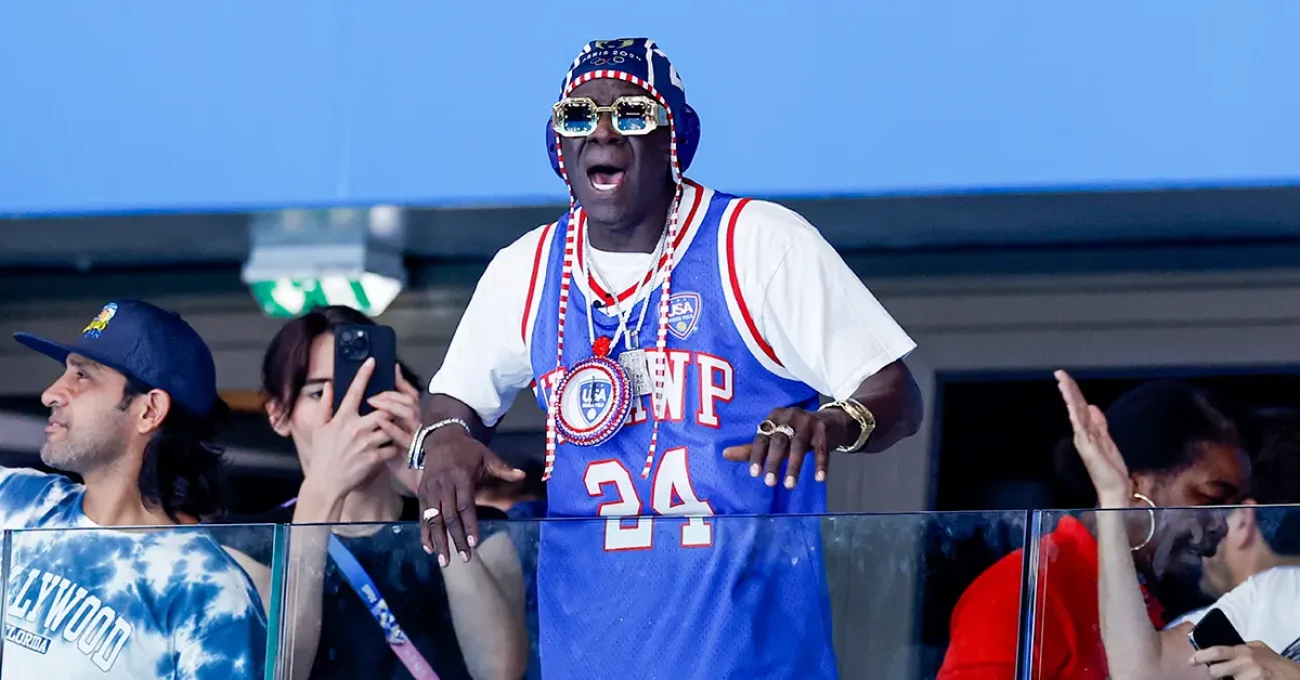
Flavor Flav turned being absolutely crazy into a $2 million fortune, and honestly, his journey is way more entertaining than most Hollywood movies. The clock-wearing rapper’s flavor flav net worth proves that being yourself (no matter how weird) can actually pay off.
So check this out – William Jonathan Drayton Jr., who we all know as Flavor Flav, basically went from being a complete mess to making $2 million by just being the most extra person in every room. Born March 16, 1959, in Roosevelt, New York, this dude was getting arrested for stealing stuff as a teenager, then somehow ended up becoming one of the most famous faces in hip-hop history. Flavor flav net worth might not be Jay-Z level, but man, his story is way crazier.
Flavor Flav Net Worth Journey: From Cooking School Dropout to Rap Star
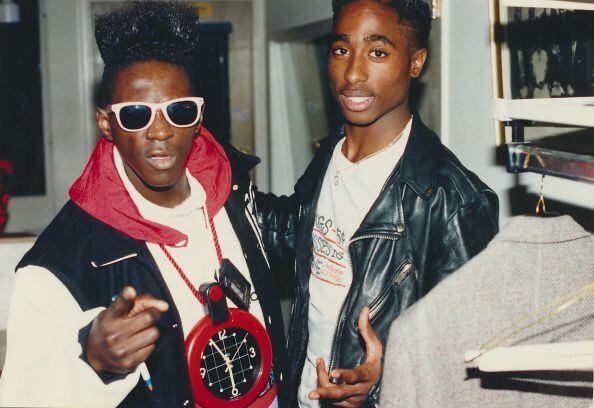
Here’s the thing that’ll blow your mind – before Flavor Flav was screaming “Yeah boyeeeeee!” on stage, he actually wanted to be a chef. No joke. After getting kicked out of high school in 11th grade (too many run-ins with the cops), he decided to get his act together and went to culinary school in 1978.
His first real paycheck came from working at his dad’s restaurant called The Soul Diner in Freeport. Picture young Flav flipping burgers and serving soul food – probably the only future rap star washing dishes and dreaming of making beats. But life had other plans when he enrolled at Adelphi University and met this guy Carlton Ridenhour, who later became Chuck D.
They started messing around on Chuck’s college radio show, and that’s when “Flavor Flav” was born – it was literally just his graffiti tag that became his stage name. The first real money from music came in 1986 when they dropped “Public Enemy #1.” This track was so fire that Def Jam Records’ Rick Rubin heard it and wanted to sign Chuck D immediately. The crazy part? Rubin didn’t even want Flav at first, but Chuck D was like “nah, we’re a package deal.” That loyalty probably saved Flav’s entire career.
How Flavor Flav Actually Built His $2 Million Through Beats and Reality TV
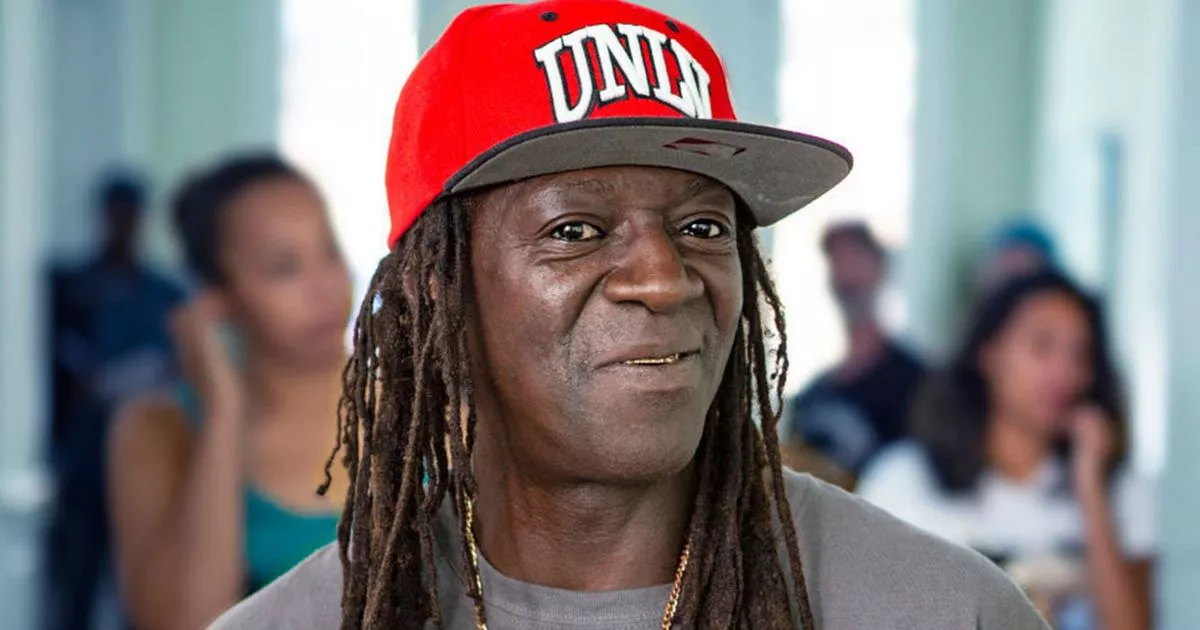
Public Enemy in the late 80s was absolutely insane. Their debut album “Yo! Bum Rush the Show” dropped in 1987 and got people’s attention, but “It Takes a Nation of Millions to Hold Us Back” in 1988? That thing went double platinum and started bringing in serious cash.
Songs like “Fight the Power” and “911 Is a Joke” (where Flav finally got to show off his solo rap skills) are still making him money today through royalties. Public Enemy sold millions of records, got six Grammy nominations, and put out 14 studio albums. That’s a lot of checks coming in over the years.
But here’s where it gets really interesting – Flav probably made more money from reality TV than from all his rapping combined. When he joined “The Surreal Life” in 2004, it was supposed to be just a fun little show. Then he started dating Brigitte Nielsen on camera, which led to “Strange Love,” which then became “Flavor of Love.” And “Flavor of Love”? Dude, that show was massive. People were obsessed with watching Flav try to find love with a house full of women competing for his attention.
Flavor Flav Net Worth Peak: When Reality TV Made Him Rich
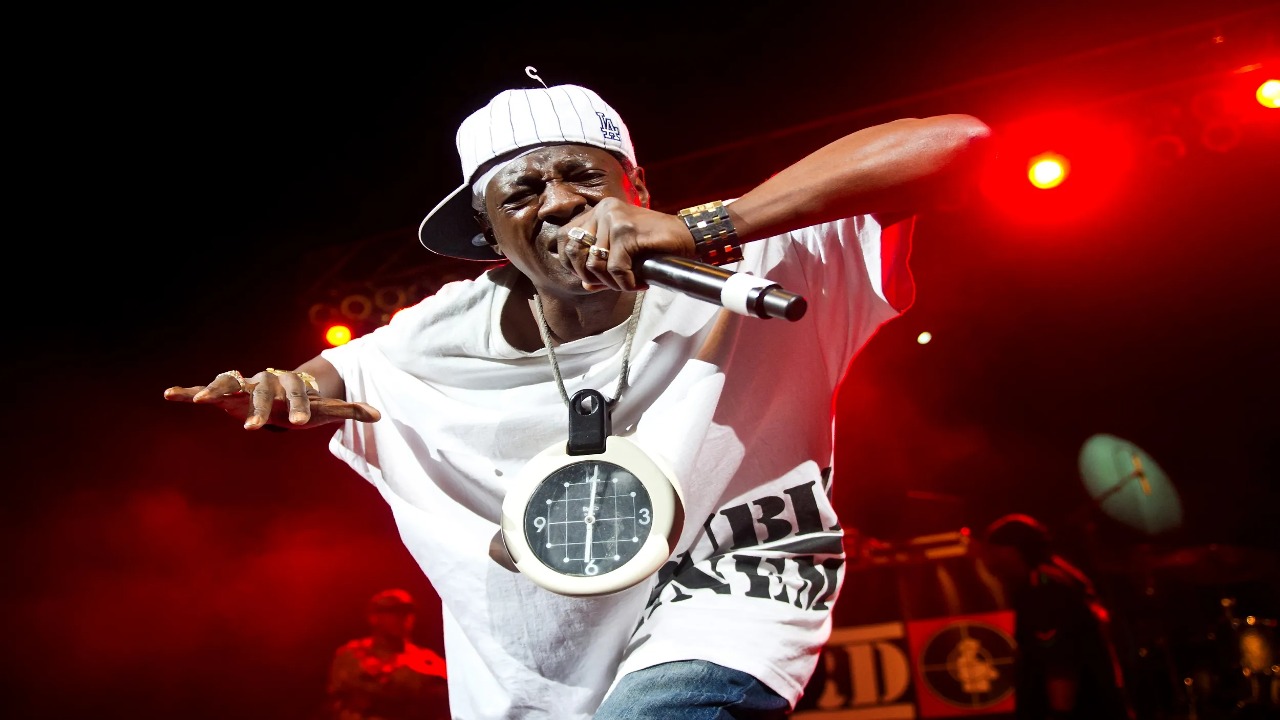
The mid-2000s were when flavor flav net worth really exploded. “Flavor of Love” wasn’t just popular – it was a straight-up cultural event. Everyone was watching, everyone was talking about it, and Flav was getting paid big time for just being his ridiculous self on camera.
During this golden period, money was coming from everywhere: Public Enemy royalties, fat reality TV paychecks, club appearances, endorsement deals, you name it. He even tried opening restaurants – “Flavor Flav’s House of Flavor” in Vegas in 2011 and “Flavor Flav’s Chicken & Ribs” in Michigan in 2012. Both places eventually closed, but hey, at least he tried to diversify.
Recently, Flav signed this wild five-year deal to sponsor USA Water Polo in 2024. Like, who thinks “I need Flavor Flav to hype up my water polo team”? But that’s exactly the kind of random stuff that keeps him relevant and keeps the money flowing.
Current Life: Where Flavor Flav Net Worth Stands Right Now
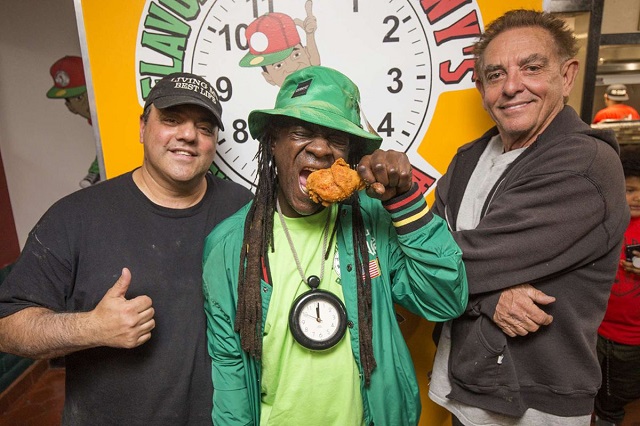
These days, flavor flav net worth stays steady at around $2 million, and he’s pulling in about $500,000 a year. That breaks down to roughly $40,000 a month, which isn’t bad for a guy who’s basically semi-retired from making new music.
His money comes from all over the place: old Public Enemy songs still getting played and streamed, random TV appearances, social media endorsements (yeah, he’s on Instagram doing sponsored posts), and personal appearances at events. In 2008, he dropped $685,000 on a house in Las Vegas – 3,708 square feet with four bedrooms. Not mansion-level, but definitely nice.
One of the coolest things about Flav lately is how he’s been helping people out. During the 2024 Olympics, he sponsored the USA Women’s Water Polo team when they were broke, and even paid rent for Olympic athlete Veronica Fraley. That’s pretty awesome for a guy who only has $2 million compared to billionaire celebrities who won’t even tip their waiters.
Flavor Flav’s Life Lessons: How to Stay Successful and Crazy
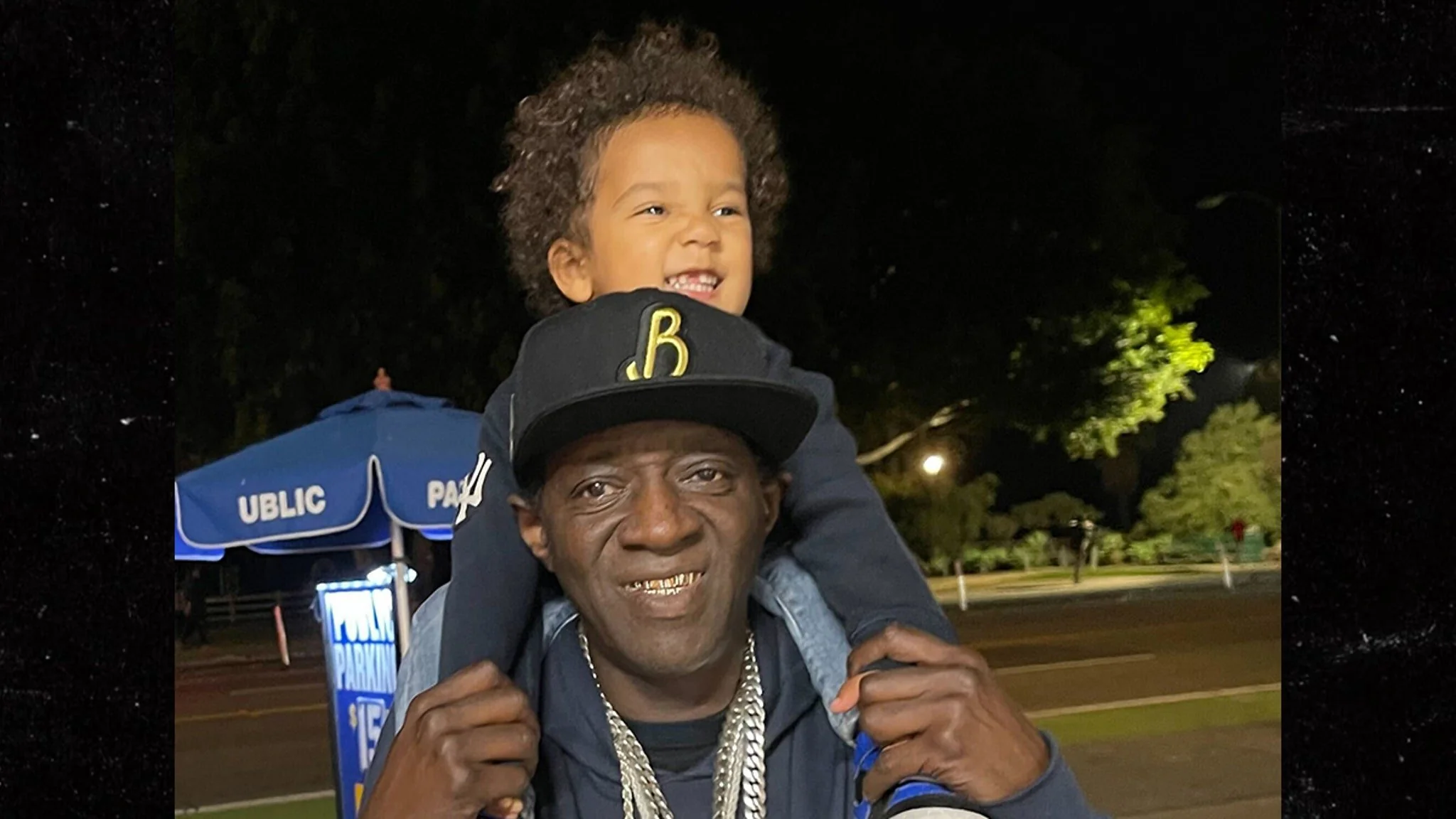
Over his wild career, Flav has dropped some surprisingly solid advice about making it in life that helped build his flavor flav net worth:
- Take Care of Yourself First: His best advice? “Do whatever it takes to make myself happy, so that I’ll be able to make others happy. If I’m not happy, I can’t make other people happy.” Basically, you can’t pour from an empty cup.
- Keep Growing: “I’m not doing no more ‘Flavor of Loves.’ I’m trying to grow. I don’t want to stay on the same page. You can’t stay on the same page in order to get to the next chapter.” Flav knew when to move on instead of beating a dead horse.
- Share Your Knowledge: “Definitely, I think I’m a life coach for real. The lessons I give are lessons you can take to the bank.” He believes in helping other people learn from his mistakes and successes.
- Bring Back the Fun: “What I’m trying to do is put back into rap music what’s missing – which is the good part, the fun part, that party part.” Entertainment should be entertaining, not just serious all the time.
- Stay Weird: Throughout everything, Flav never tried to be normal or fit in. His giant clocks, crazy outfits, and “Yeah boyeeeeee!” screams were 100% authentic to who he was.
- Bounce Back: Despite going through addiction, legal troubles, and business failures, Flav kept finding ways to reinvent himself and stay relevant.
Flavor Flav’s story is proof that you don’t need to be the smartest or richest person to make it. His $2 million net worth represents something way more valuable – the ability to be completely yourself and turn that into a decades-long career. From hip-hop legend to reality TV king to Olympic team sponsor, Flav shows that authenticity and personality can take you further than you’d ever imagine.
Sports
Why Duquesne has to be ‘very lean and very efficient’ in post-House settlement world of college sports
MENU ACCOUNT SECTIONS OTHER CLASSIFIEDS CONTACT US / FAQ Link 0
Sports
Hsieh Su
Hsieh Su-wei stands as one of tennis’s most remarkable doubles specialists, capturing nine Grand Slam titles and earning over $12.9 million throughout her extraordinary career. At 39 years old, this Taiwanese tennis icon continues to defy expectations with her unorthodox playing style and incredible longevity at the sport’s highest level. Her journey from a young […]
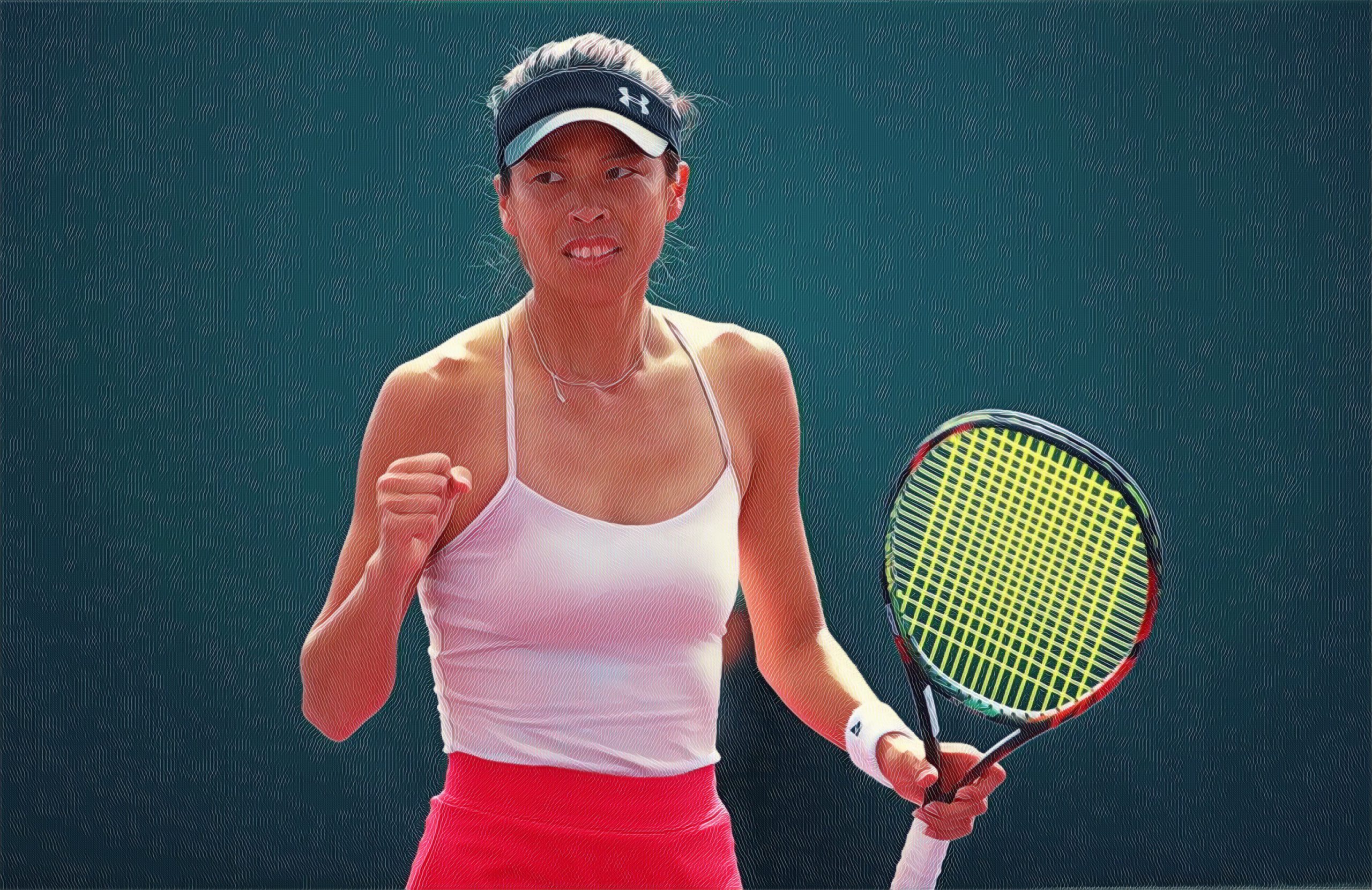
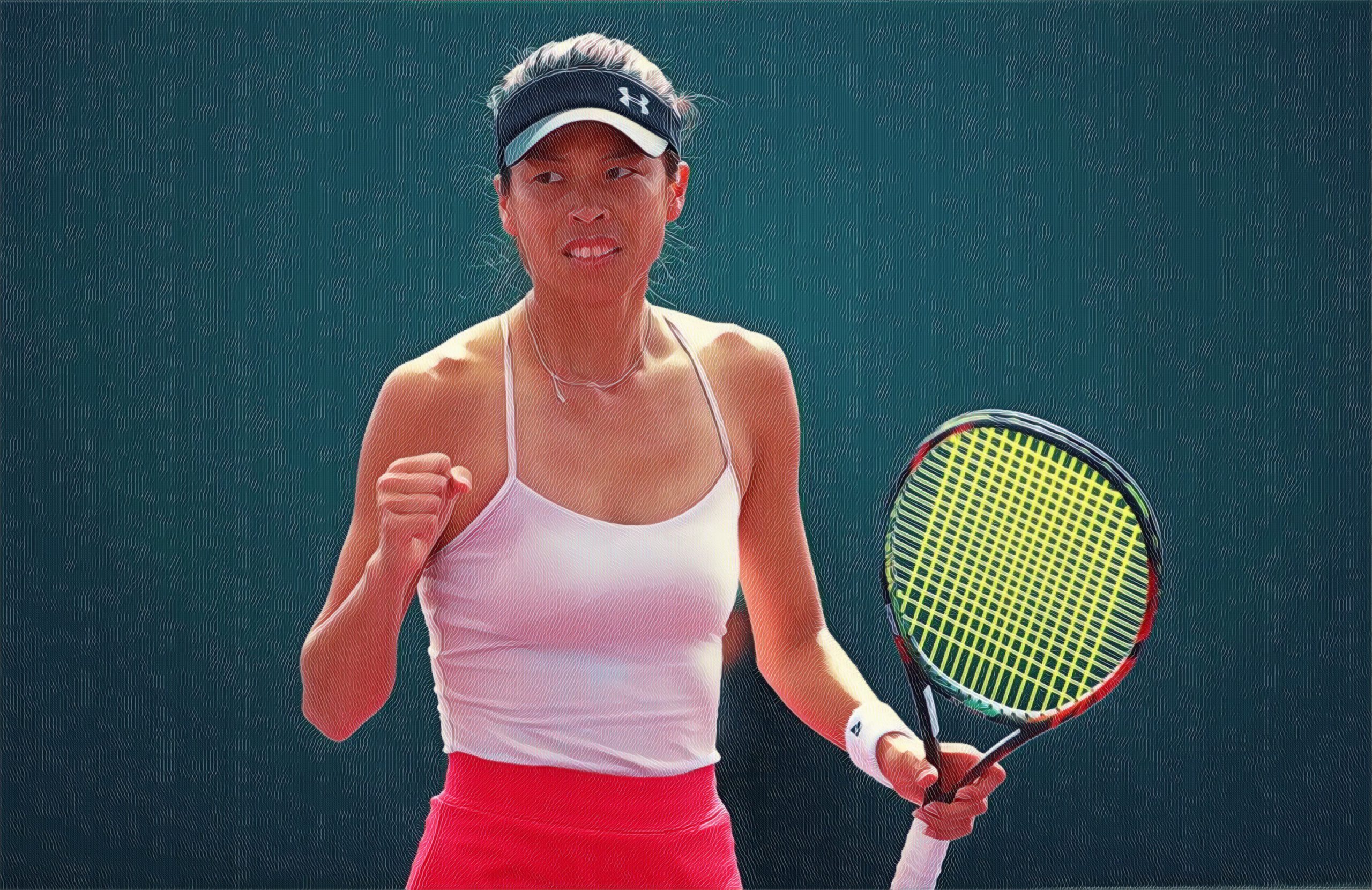

Hsieh Su-wei stands as one of tennis’s most remarkable doubles specialists, capturing nine Grand Slam titles and earning over $12.9 million throughout her extraordinary career.
At 39 years old, this Taiwanese tennis icon continues to defy expectations with her unorthodox playing style and incredible longevity at the sport’s highest level. Her journey from a young girl in Kaohsiung to becoming a former world No. 1 doubles player showcases determination and unique talent that has captivated tennis fans worldwide.
In this article, you will know Hsieh Su-wei’s net worth, career earnings, career overview, stats, relationship status, and more about this exceptional athlete who keeps making history in professional tennis.
Hsieh Su-wei’s Biography
| Category | Details |
| Full Name | Hsieh Su-wei (謝淑薇) |
| Date of Birth | January 4, 1986 |
| Age | 39 years old |
| Nationality | Taiwanese (Chinese Taipei) |
| Height | 5’7″ (1.70m) |
| Weight | 126 lbs |
| Birthplace | Kaohsiung, Chinese Taipei |
| Turned Pro | 2001 |
| Career Prize Money | $12,980,784 |
| Relationship Status | Dating Frederic Aniere |
| Instagram Profile | @sw.hsieh |
Early Career
Hsieh Su-wei discovered tennis at the age of five when her father, Hsieh Tze-Lung, introduced her to the sport. Growing up in Kaohsiung with her mother Ho Fom-Ju and six siblings, she quickly developed a passion for the game that would define her life.
Her family provided unwavering support as she pursued her tennis dreams, understanding the sacrifices required to compete at the highest levels.
Her junior career began in earnest when she played her first professional tournament at the ITF level in New Zealand in 2001. Even in her early years, coaches and observers noticed her unique playing style that would later become her trademark.
She developed the unusual technique of playing with two hands on both sides, creating flat and quick groundstrokes that confounded opponents and delighted spectators.
The young Taiwanese player showed remarkable dedication and natural talent that set her apart from her peers. Her early development focused on building the unconventional game that would later make her one of the most recognizable players on tour.
She spent countless hours perfecting her craft, developing the variety of shots and tactical awareness that would become hallmarks of her playing style.
Her progression through the junior ranks demonstrated the promise that would eventually materialize into one of the most successful doubles careers in tennis history.
The foundation she built during these formative years, combining technical innovation with fierce competitiveness, prepared her for the challenges ahead in professional tennis.
Professional Career
Hsieh Su-wei turned professional in 2001 and initially competed in both singles and doubles competitions. Her early professional years saw her gradually climbing the rankings while developing the unique style that would make her famous.
She captured her first WTA doubles title in 2007 in Beijing, partnering with Chuang Chia-jung, marking the beginning of what would become an incredible doubles career.
Her singles career reached its peak when she achieved a career-high ranking of No. 23 in February 2013. During this period, she won three WTA singles titles, including victories in Kuala Lumpur and Guangzhou in 2012, followed by Hiroshima in 2018.
Her most memorable singles achievement came at the 2021 Australian Open, where she reached her first Grand Slam quarterfinal at age 35, becoming the oldest debutant Grand Slam singles quarterfinalist.
However, her greatest success came in doubles competition. She first reached the world No. 1 doubles ranking on May 12, 2014, and spent a total of 59 weeks at the top, making her the longest-tenured No. 1 doubles player from East Asia.
Her partnership with Peng Shuai proved particularly fruitful, yielding multiple Grand Slam titles including Wimbledon 2013 and the French Open 2014.
Throughout her career, she has formed successful partnerships with various players, demonstrating remarkable adaptability and court intelligence. Her most recent Grand Slam victories include the 2024 Australian Open in both women’s doubles with Elise Mertens and mixed doubles with Jan Zieliński.
After taking a break in 2022, she returned to competition in 2023 and continues to compete at the highest level, focusing exclusively on doubles.
Coach
Paul McNamee serves as Hsieh Su-wei’s primary coach and has been instrumental in her success for over 10 years. McNamee, a former Australian doubles specialist who won four men’s doubles major titles and a Wimbledon mixed doubles title with Martina Navratilova, brings extensive experience to their partnership. He previously served as tournament director for the Australian Open for 12 years and helped establish the Hopman Cup.
McNamee’s coaching philosophy centers on understanding and maximizing Hsieh’s unique playing style rather than attempting to change it. He has guided her through seven women’s Grand Slam doubles titles and one mixed doubles title, helping her develop game plans with different partners throughout her career.
His expertise has been crucial in Hsieh’s success with various partners, including Peng Shuai, Barbora Strycova, Elise Mertens, and Wang Xinyu.
The coaching relationship primarily operates through correspondence and major tournament appearances, allowing Hsieh to maintain her independence while receiving strategic guidance when needed.
McNamee’s approach involves creating specific game plans for different partnerships, understanding how to maximize the strengths of each combination while minimizing weaknesses.
In addition to McNamee’s guidance, Hsieh also receives support from her boyfriend Frederic Aniere, who serves as her traveling coach. Aniere provides day-to-day support and emotional stability while McNamee focuses on strategic and technical aspects of her game.
This collaborative coaching approach has proven highly effective, allowing Hsieh to maintain her high level of performance well into her late thirties.
Hsieh Su-wei’s Net Worth Details
Hsieh Su-wei’s net worth estimated between $8-12 million as of 2025.
Career Earnings
| Year | Prize Money | Major Achievements |
| 2025 | $268,638 | Australian Open doubles final |
| 2024 | $1,630,433 | Australian Open doubles & mixed doubles titles |
| 2023 | $886,334 | French Open & Wimbledon doubles titles |
| 2022 | $0 | Did not compete |
| 2021 | $1,410,910 | Wimbledon doubles title, Australian Open singles QF |
| 2020 | $585,872 | Year-end world No. 1 doubles ranking |
| 2019 | $2,066,334 | Career-high earnings year |
| 2018 | $1,270,928 | Hiroshima singles title |
| 2017 | $450,014 | Multiple doubles titles |
| 2016 | $364,480 | Consistent performance year |
| 2015 | $357,039 | Strong doubles results |
| 2014 | $810,386 | First time reaching world No. 1 doubles |
| 2013 | $1,109,280 | Career-high singles ranking |
| 2012 | $490,114 | Two singles titles |
| Career Total | $12,980,784 | 9 Grand Slam titles |
Career Statistics
| Category | Details |
| Current Singles Ranking | Not currently competing in singles |
| Career High Singles Ranking | No. 23 (February 25, 2013) |
| Current Doubles Ranking | Active (varies by tournament) |
| Career High Doubles Ranking | No. 1 (May 12, 2014) |
| Weeks at Doubles No. 1 | 59 weeks |
| WTA Singles Titles | 3 |
| WTA Doubles Titles | 35 |
| Grand Slam Singles Best | Quarterfinal (2021 Australian Open) |
| Grand Slam Doubles Titles | 7 |
| Mixed Doubles Grand Slam Titles | 2 |
| Total Grand Slam Titles | 9 |
| Career Prize Money | $12,980,784 |
| Olympic Appearances | 2012 London Olympics |
| Fed Cup Appearances | Multiple years (2003, 2006-08, 2010, 2012, 2015-16) |
| Asian Games Medals | 7 (2 gold, 3 silver, 2 bronze) |
| Years Professional | 24 years (2001-2025) |
| Playing Style | Right-handed, two-handed both sides |
| Preferred Surface | Hard court |
FAQs
1. What is Hsieh Su-wei’s most significant achievement in tennis?
Hsieh Su-wei’s most significant achievement includes winning nine Grand Slam titles total, comprising seven women’s doubles and two mixed doubles championships. She also became the first Taiwanese player to reach world No. 1 in doubles rankings, holding the position for 59 weeks, which represents the longest tenure by any East Asian player.
2. How old was Hsieh Su-wei when she reached her first Grand Slam singles quarterfinal?
Hsieh reached her first Grand Slam singles quarterfinal at age 35 during the 2021 Australian Open, making her the oldest debutant Grand Slam singles quarterfinalist in tennis history. She defeated several seeded players including Bianca Andreescu before losing to eventual champion Naomi Osaka in the quarterfinals.
3. Who is Hsieh Su-wei’s boyfriend and what role does he play in her career?
Frederic Aniere has been Hsieh Su-wei’s boyfriend since 2016, totaling eight years together. The French real estate agent gave up his career to travel with Hsieh as her support system and traveling coach, often practicing with her and providing emotional stability throughout tournaments worldwide.
4. What makes Hsieh Su-wei’s playing style unique compared to other tennis players?
Hsieh plays with two hands on both her forehand and backhand sides, creating flat and quick groundstrokes that confound opponents. She combines this unorthodox technique with crafty gameplay, aggressive volleys, and an incredible variety of shots that commentators describe as defying geometry and physics, earning her the nickname “The Wizard.”
5. How much prize money has Hsieh Su-wei earned throughout her professional career?
Hsieh has earned $12,980,784 in career prize money since turning professional in 2001, making her one of the highest-earning Asian players in tennis history. Her biggest earnings year came in 2019 when she earned over $2 million, and she continues to add to her total through doubles competition success.
Sports
Faf du Plessis, Adam Milne star in Texas Super Kings’ win over Seattle Orcas
Faf du Plessis delivered yet another masterclass, ably supported by Shubham Ranjane’s composed half-century. Their efforts set the stage for a successful defense, as Adam… Milne’s five-wicket haul, combined with the spin duo of Noor Ahmad and Akeal Hosein, ensured that the Texas Super Kings handed a comprehensive 51-run defeat to the Seattle Orcas — […]
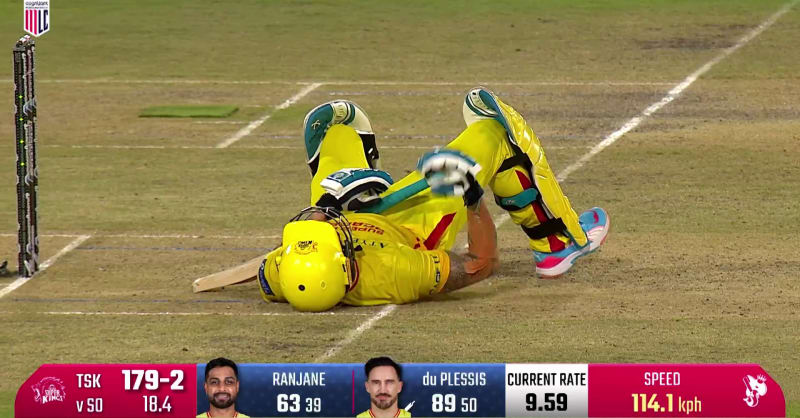
Faf du Plessis delivered yet another masterclass, ably supported by Shubham Ranjane’s composed half-century. Their efforts set the stage for a successful defense, as Adam…
Sports
Is Pro Volleyball Player Elizabeth McMahon the Daughter of Fantastic Four’s Julian McMahon?FandomWire
The world has lost a screen legend, Julian McMahon, the Australian-American actor known for roles in Nip/Tuck, Charmed, and FBI: Most Wanted, has sadly passed away at 56 after a battle with cancer. His wife, Kelly McMahon, revealed in a statement to Deadline, With an open heart, I wish to share with the world that […]
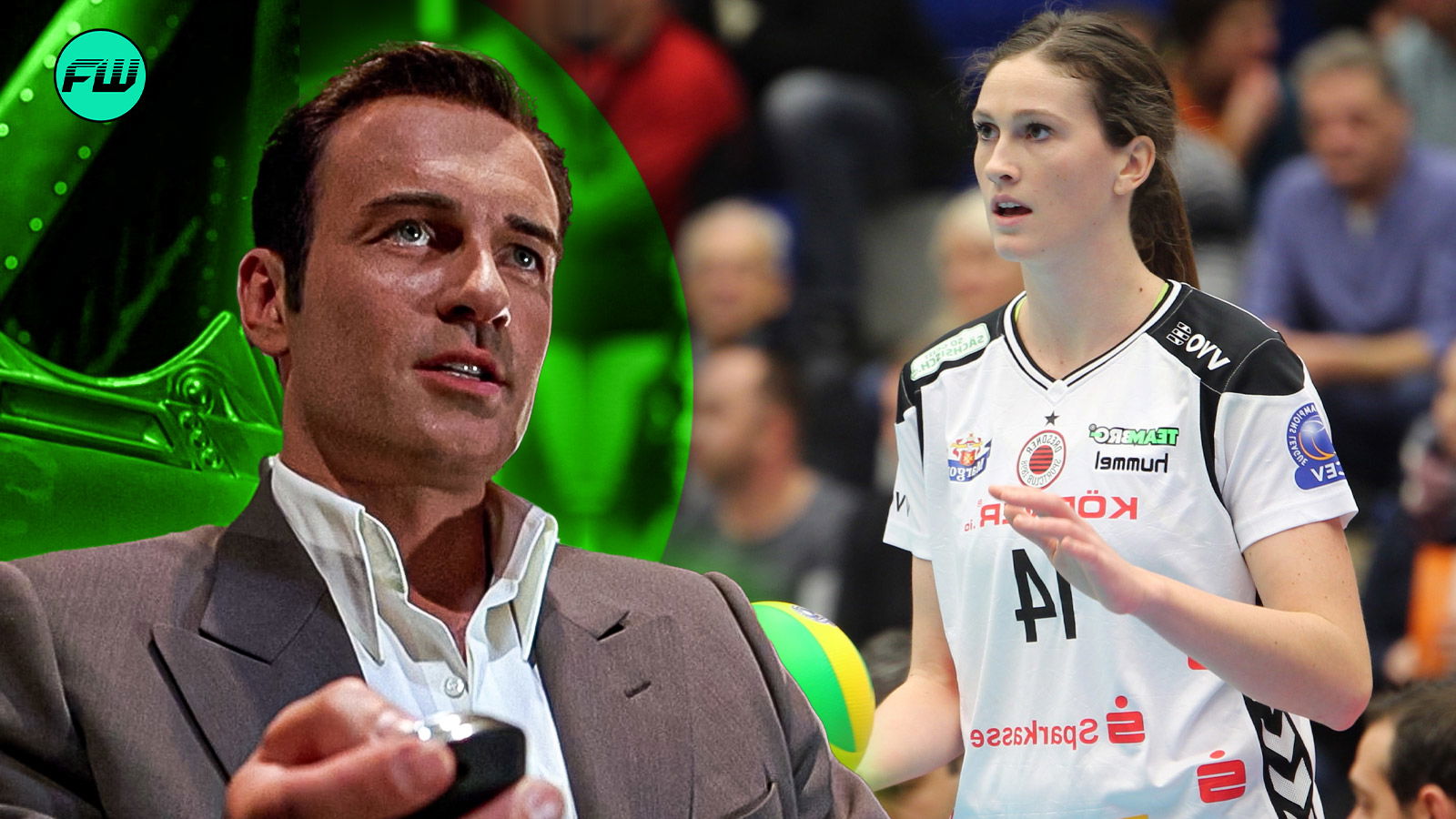
The world has lost a screen legend, Julian McMahon, the Australian-American actor known for roles in Nip/Tuck, Charmed, and FBI: Most Wanted, has sadly passed away at 56 after a battle with cancer. His wife, Kelly McMahon, revealed in a statement to Deadline,
With an open heart, I wish to share with the world that my beloved husband, Julian McMahon, died peacefully this week after a valiant effort to overcome cancer, Julian loved life. He loved his family, his friends, his work, and his fans, His deepest wish was to bring joy into as many lives as possible.
Fans also remember him as the first actor to bring Marvel’s villain Doctor Doom to life on the big screen in Fantastic Four and its sequel.
While Hollywood grieves the loss of one of its most iconic villains, talk has turned to a rising star from the McMahon family, this time on the volleyball court. But the internet seems to be confused. Is the professional volleyball player Elizabeth McMahon really Julian McMahon’s daughter?
Who Is Julian McMahon’s Real Daughter, And Why Is the Internet Confused?
The internet has been quick to jump to conclusions following the news of actor Julian McMahon’s passing, including one particularly viral mix-up involving his daughter.
Many outlets have mistakenly claimed that the Fantastic Four star’s daughter is none other than Liz McMahon, the professional volleyball player and gold medalist. Let’s clear that up.

Elizabeth “Liz” McMahon, born February 27, 1993, is an accomplished American volleyball player. As per TeamUSA.com, she won a silver medal at the 2010 Junior Olympics, became the first athlete at the University of Illinois to earn the Senior CLASS Award, and took home a gold medal at the 2017 Pan American Cup, where she was also named Best Opposite.
She was born to Kevin and Janine McMahon and grew up in West Chester, Ohio. Simply put, she’s a sports star, but she’s NOT related to Julian McMahon.
Julian McMahon’s daughter, also named Elizabeth, full name Madison Elizabeth McMahon, was born on June 10, 2000, to Julian and actress Brooke Burns. While she’s also athletic, having played varsity volleyball (as per godeacs.com) at Marymount High School in Los Angeles and competed in club volleyball with Sunshine and SCVC, her name started trending due to confusion with the other Liz. She was recruited by several universities for both indoor and beach volleyball but hasn’t pursued a high-profile sports career.
The shared name may have sparked the mix-up. But factually, the volleyball champion and the actor’s daughter are two completely different people.
Julian McMahon’s Final Social Media Exchange Was a Message to His Daughter
In the wake of all of this news, one of his final public moments has resurfaced, a touching exchange with his only daughter, Madison Elizabeth.
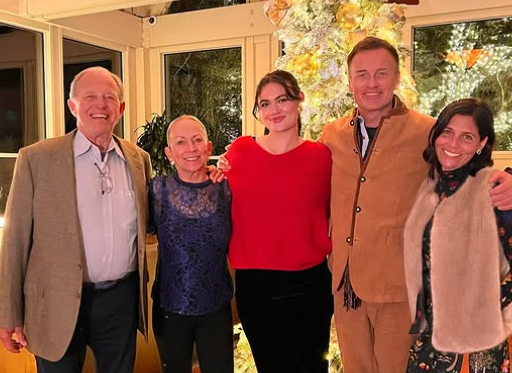
The Nip/Tuck star, known for playing intense and often dark characters, showed his softer side on Instagram earlier this year. In March, Madison had shared a proud milestone online, “Taught my first yoga class today. I guess dreams do come true,” she wrote, posting a video from her yoga studio in Miami.
McMahon was quick to support his daughter’s new journey. Commenting,
Your awesome!!!!!
A sweet and slightly misspelled message that didn’t go unnoticed. Madison replied with affection and a little humor, writing back, “no, YOU’RE awesome.”
View the post here:
The heartfelt father-daughter exchange now stands as one of McMahon’s final social media interactions, capturing his deep love for Madison and the strong bond they shared. Thus proving, beyond his on-screen roles, Julian McMahon was, at his core, a proud father, whether his daughter is playing volleyball or teaching yoga, he always will be her number one cheerleader.
What’s your favorite role of Julian McMahon? Share with us in the comments below!
-

 College Sports1 week ago
College Sports1 week agoWAC to Rebrand to UAC, Add Five New Members in 2026
-

 Technology3 weeks ago
Technology3 weeks agoPolar is teasing a Whoop alternative without subscription
-

 Technology3 weeks ago
Technology3 weeks agoI loved the Whoop MG, but didn’t love the price: that’s why I’m excited about this mysterious new fitness band from a major Garmin rival
-

 Motorsports6 days ago
Motorsports6 days agoWhy Cosmetics are Making Up for Lost Time in Women’s Sports
-

 Professional Sports2 weeks ago
Professional Sports2 weeks agoAlex Pereira responds to rumors of UFC heavyweight title fight with threatening message
-

 College Sports3 weeks ago
College Sports3 weeks agoLocked On Women's Basketball
-
College Sports2 weeks ago
Women's Basketball Thanks Shannon LeBeauf for 14 Seasons
-

 College Sports2 weeks ago
College Sports2 weeks agoAlabama Basketball
-

 Health3 weeks ago
Health3 weeks agoKyrie Irving's Mental Health Message
-

 Technology1 week ago
Technology1 week agoPet fitness and wellness trends for a healthier and happier dog


